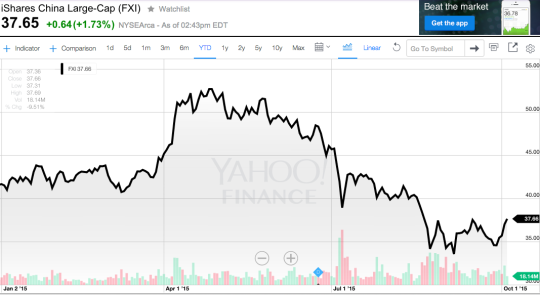
I’ve been somewhat prematurely congratulated on the success of my China strategy. Indeed, I have been vocally sceptic this year about Chinese stock market and currency. And given that I ALWAYS put my money where mouth is, it is natural for my followers to assume that I making “fortunes untold” on those trades.
The reality is that the trades I have been involved in this year have been, while profitable thus far, were by no means “slam-dunks” and may yet end being in the red.
The readers of my book “The Next Perfect Trade” http://tinyurl.com/q3sdqpo have pointed out that the long USDCNH trade, for example, may not meet some of my criteria for a superior trade.
My book had been mostly completed before China came into focus. In this post, by popular demand, I will outline my approach to trading RMB and $FXI in the light of my broader strategies.
As far back as 2006, I have started to suspect that Chinese economy was a giant Ponzi Scheme destined for a collapse far more devastating than what happened to Japan in the 80’s.
To be clear: I don’t produce my own economic research, all I can do is listen to people and side with those who make more sense.
However, for years I have stayed out of betting against China, because I couldn’t formulate any bearish strategy that would fit my criteria. I’ve written before how difficult, in general, it is to be short a stock market and as for the currency – the appreciation trend had been overwhelming.
I have mentioned in my book that if you can’t a find a good trade to express a view, you may want to question the view. So despite, having a wrong view for almost a decade, I have escaped much damage by failing to find a trade fitting into my strategy.
By 2013-2014 the China troubles appeared more imminent to some experts, but my eyes were turned elsewhere. I saw tremendous value in being long dollar vs. yen and, later, vs’ euro. But my strongest conviction was in the long end of the US Treasuries curve, where I had a disproportionate risk concentration by the beginning of 2014.
According to my strategic language (which I explain in detail in my book) being long USDCNY (betting on RMB devaluation) was, while attractive on its own, a strictly inferior trade with respect to other positions in my portfolio.
For the currency devaluation to occur, at least one, if not both of the following conditions had to be concurrently satisfied:
- Broad dollar strength
- Dramatic weakening of Chinese economy
My portfolio was already directly aligned with the first condition; and a massive Chinese slowdown was likely to affect the global risk appetite and cause a flight to the US bonds. Thus, in 2014, the currency bet was redundant to my portfolio and I stayed out.
In 2015, the game had changed: the dollar had already rallied and so had the bonds, making those bets no longer as superior. I was increasingly convinced by the arguments for the necessity of the Chinese credit cycle unwind. (I will omit the discussion of idiosyncratic pros and cons – I have written on the subject enough and for further information read “A Great Leap Forward?” by John Mauldin and Worth Wray.)
Yet I was waiting for another shoe to drop: the stock market. I thought Chinese stocks screaming up would give the government a good excuse not to devalue. Yet without devaluation the equity bonanza was likely to end in tears.
So I got involved in two very uncharacteristic trades: long USDCNH (offshore bet against RMB; at this point it appears I might have done better with USDCNY) and short FXI (Hong Kong listed Chinese large cap). I chose to bet against the dollar expressed ETF, because I was hoping for an additional benefit in the event of currency devaluation.
But Chinese stocks were rallying and I had no intention to be wiped out by shorting into the bubble (I’ve written about this too). So my only “option” was to buy puts, illiquid and expensive as they were. And as the market continued to rally another 25% since I started, I kept adding more puts, but I was beginning experience pain.

Why would I get involved in buying options and in betting against a currency with positive carry? I have cautioned against both of those things in my book. There are times though when the risk-reward appears so skewed, that it is beginning to have the flavor of a “free lunch”. I decided that the opportunity was too great, and in the absence of the ability to structure a “no-lose” trade, I had to risk some fixed amount of capital.
Initiate the positions and run them to the bitter end. No hedging, no whining.
Not only my long dollar/long bonds came under pressure in Q2 of 2015, but the capital committed to bets against China was grinding away. Fortunately, I had been positioned with enough caution to keep all the trades.
Needless to say in Q3 things got much better.
But I want to emphasize that my entry points were not perfect and the trades are far from complete with my portfolio still leaking carry and decay. In fact, the extreme scenarios, I have been hoping for, HAVE NOT yet materialized.
The equity trade I think will be over soon one way or another. But I still see no way out of further currency devaluation, and I will continue to pay carry to stay in the trade. With the full understanding that the whole strategy may yet end up being a loser.
Chart Source: Yahoo! Finance
Image: Terracotta Army by Tom Wachtel




